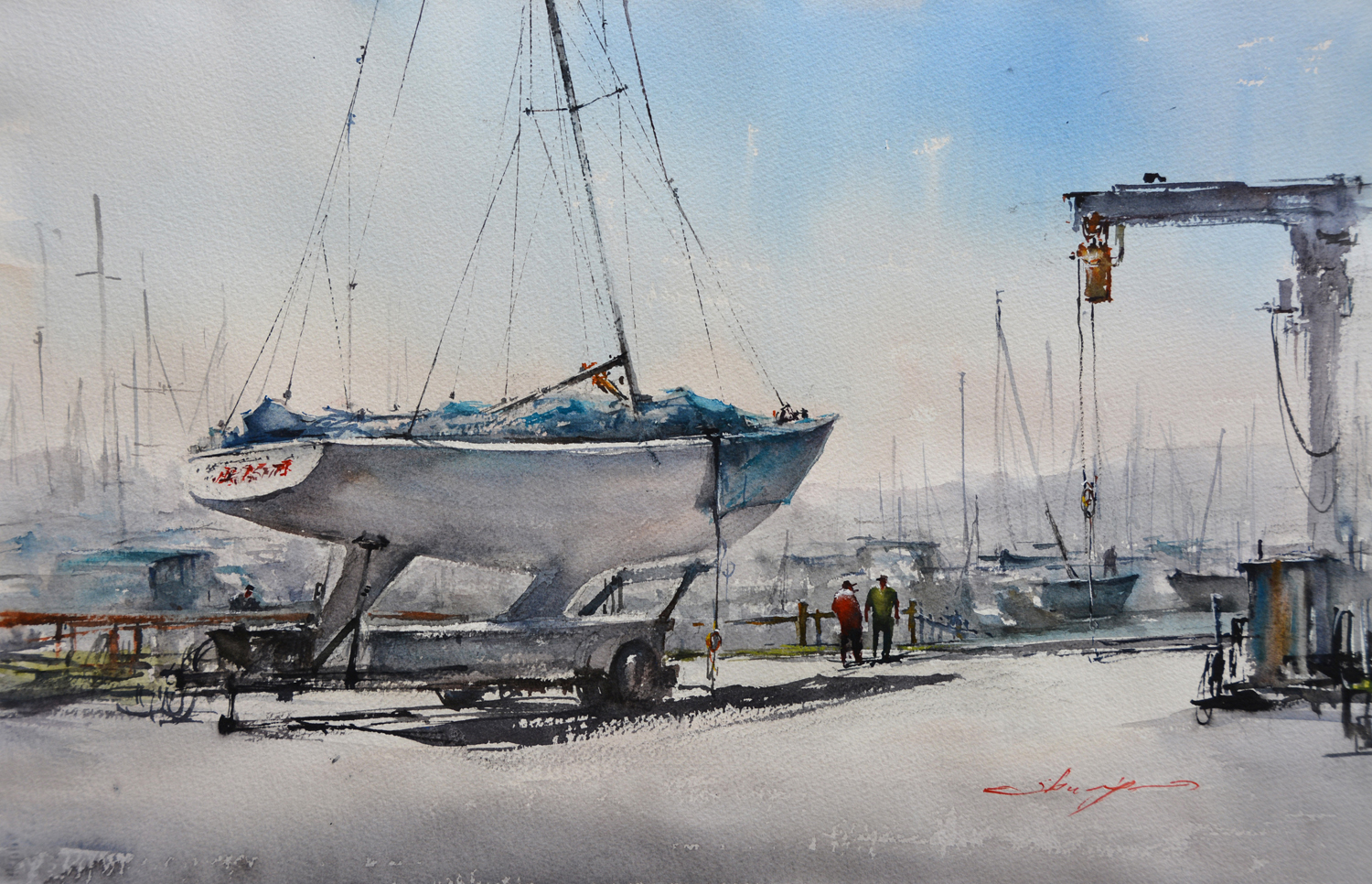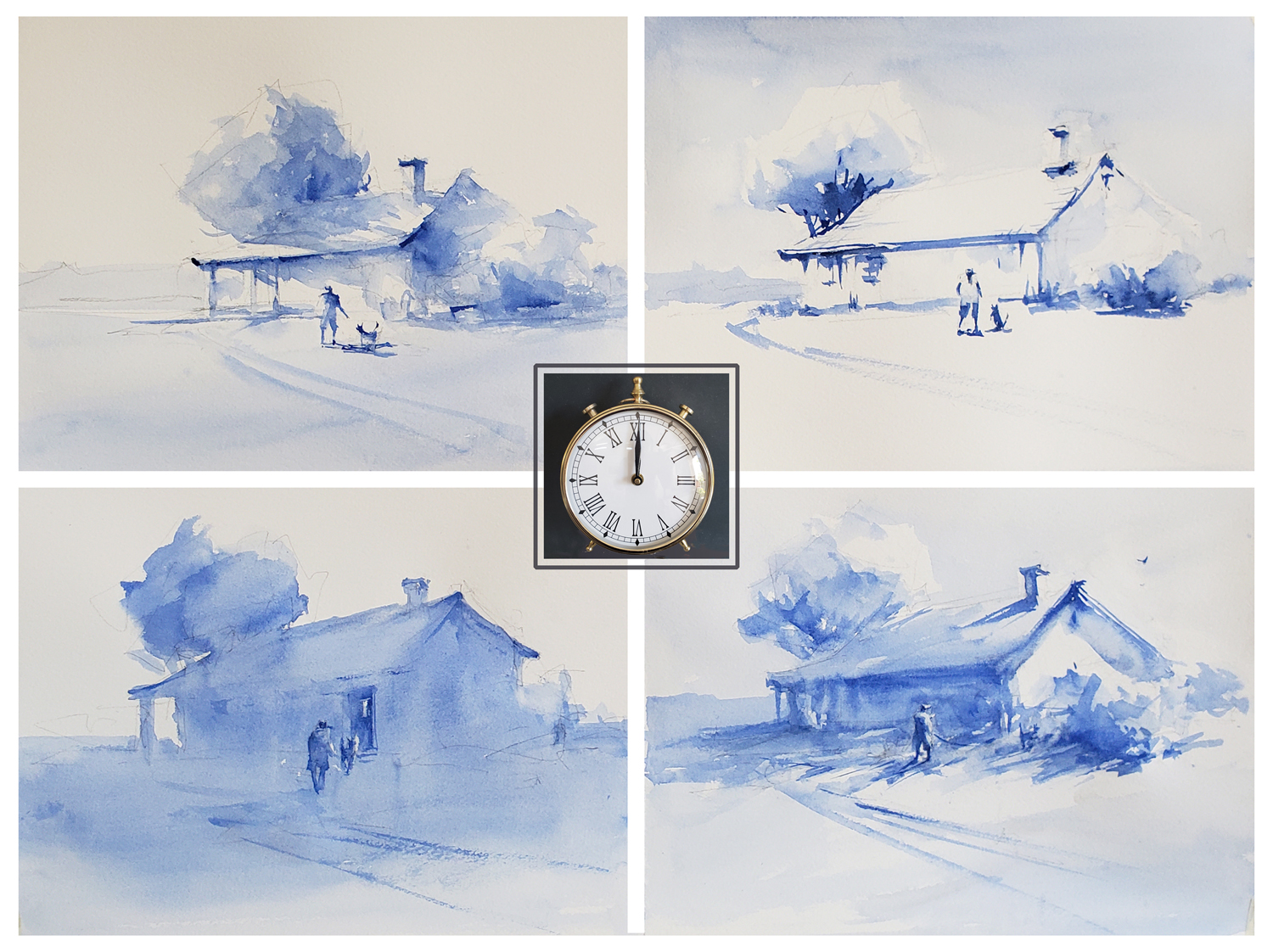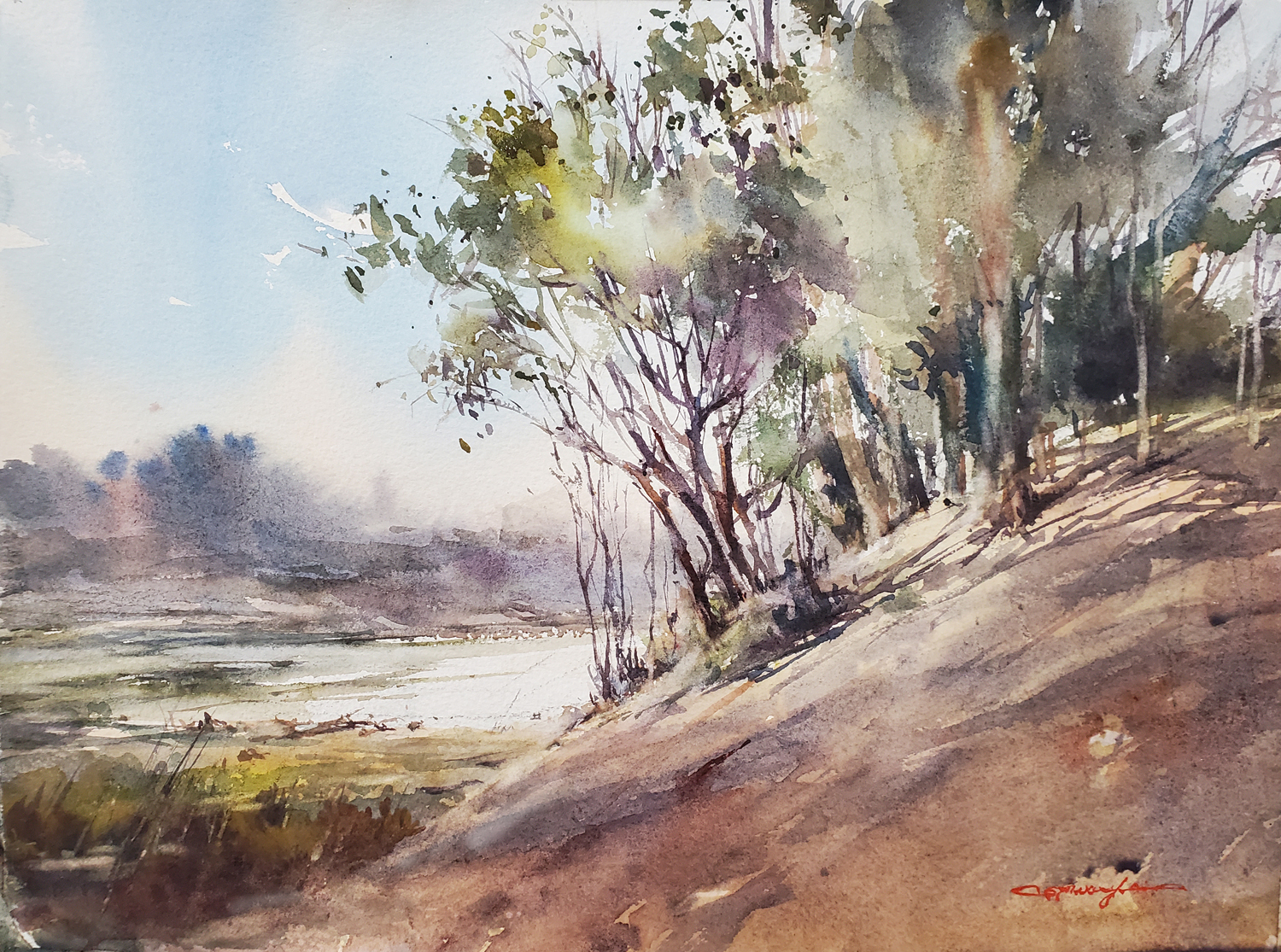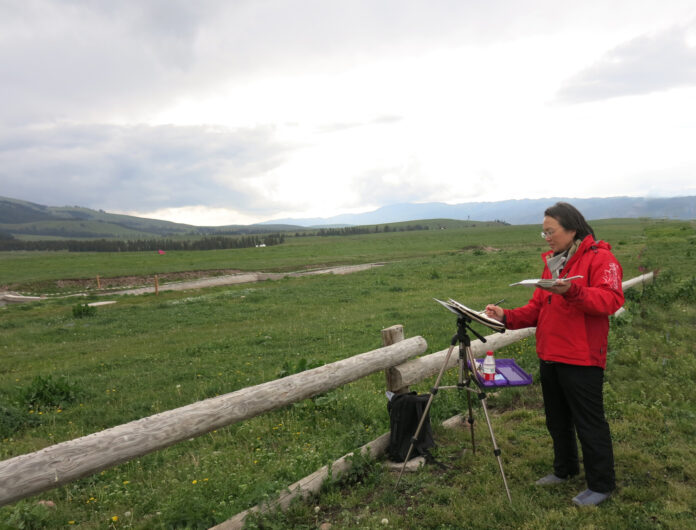The following is an excerpt from Shuang Li’s new book, “Watercolor Plein Air Basics: A Guide to Outdoor Watercolor Painting.” Meet Shuang Li in person at the 10th Annual Plein Air Convention & Expo in beautiful Denver, Colorado, May 21-25, 2023!
Capturing the Light en Plein Air
by Shuang Li

Understanding How Light Changes: Plein Air Painting for Beginners
Before going outdoors, you need to understand the biggest difference between painting in the studio and painting outdoors is the LIGHT condition. When painting indoors in a studio the light does not affect the results when we paint for longer periods of time, regardless of the subject. When outside, the natural light changes constantly and affects how we see the subject matter and surroundings.
The changing light is affected by the time of the day:
- early morning
- midday
- evening
…And the weather conditions:
- sunny
- overcast with different cloud coverage
- fog
- rain
- snow
Adding location variations and seasonal conditions, an artist may face complex situations with multiple variables at any given moment. No wonder many beginners feel it is challenging or intimidating to think about these complications even before setting up an easel to paint.
Here are some explanations to help the developing plein air artist better understand the use of light when painting plein air.
How Light Changes in the Day
If the artist stands at the exact same position to see a subject matter for the duration of a day, he or she will find that in early morning, when the sunlight is coming from a lower angle of the east side, the subject matter will generate a longer shadow in the opposite direction of the light source.
See the example of the house in this illustration below. It is the same in the late afternoon, except the long shadow moves in the opposite direction of the morning. At high noon, when the sun is directly above the subject matter, the light generates the shortest shadow, if any, of the subject matter. When evening comes and the sun nearly drops below the horizon, one may only see a silhouette of the subject matter that merges with the shadow of itself.

Among the four conditions, the high noon position is the least favorable for artists to paint. It makes the subject matter look “overexposed” because of the light source angle directly from the top. It also generates the shortest visible shadow directly under an object, making the various shapes harder to connect. This creates a painting that may have many scattered or isolated small shapes. Longer shadows connect more shapes and lend unity to a plein air watercolor painting.

Helpful Links:
- Shuang Li’s website, where you can get a copy of “Watercolor Plein Air Basics: A Guide to Outdoor Watercolor Painting”
- Learn more with “Fearless Waterscapes with Shuang Li,” a video workshop that will help you become fluent in the unique language of painting water.
- Learn from Shuang Li IN PERSON at the 10th Annual Plein Air Convention & Expo in Denver, Colorado, May 21-25, 2023.
And browse more free articles here at OutdoorPainter.com




